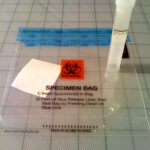
SARS-CoV-2 is the virus responsible for the coronavirus disease 2019 (COVID-19) global pandemic (Dental Elf – 26th February 2021). One of the main strategies for controlling this respiratory virus is through population testing and isolation of those with suspected or proven COVID-19. Real-time reverse transcription-polymerase chain reaction (rRT-PCR) has a high specificity and is the gold standard for the diagnosis of SARS-CoV-2 (Dental Elf – 24th March 2021). Nasopharyngeal swabs are currently used for sample collection however emerging evidence have shown saliva as a potential sampling option.
The aim of this systematic review and meta-analysis was to evaluate the literature on the use of saliva tests for the detection of SARS-CoV-2 and to determine its diagnostic efficacy.
Methods
An electronic database search of Medline, Embase, The Cochrane Central Register of Controlled Trials, MetaRegister, ClinicalTrials.gov and the system for information on Grey literature in Europe was used. Additionally, the last 10 months of relevant journals were hand-searched to identify eligible papers. Prospective and retrospective human studies that collected paired samples and compared saliva samples with oral and/or nasopharyngeal swabs were included in the analysis. Quality assessment was undertaking using the QUADAS-2 tool.
Results
- 16 studies were included in this systematic review comprising 2928 paired samples. 5 studies collected samples from outpatients (with or without symptoms of COVID-19) whilst 3 studies from confirmed COVID-19 positive cases. The other reported cases were variable.
- 3 studies collected saliva by asking patients to ‘cough up’ while the other studies collected saliva through passive drooling.
- With respect to quality of studies using the QUADAS-2 tool, 2 domains (index test and reference standard) were unclear in all studies. Some studies were judged to be at high risk of bias with concerns regarding applicability. Only one study reported a priori-power analysis to calculate the sample size. A funnel graph analysis showed no evidence of publication bias.
- All 16 studies were included in the meta-analysis. The pooled sensitivity and specificity for saliva tests were relatively high at 0.88 (95% CI 0.82-0.92) and 0.92 (95% CI 0.75-0.98) respectively. The pooled positive likelihood ratio was 11.6(95% CI 3.2-0.98) and pooled negative likelihood ratio was 0.13(95% CI 0.09-0.20).
- The diagnostic odds ratio was 87 (95% CI 19-395). The area under curve was 0.92(95% CI 0.90-0.94) suggesting a good performance of the saliva tests in detecting SARS-CoV-2.
Conclusions
The authors concluded:-
Saliva is a fluid that can enable very good discriminative and sensitive detection of SARS-CoV-2.
Comments
This systematic review and meta-analysis of 16 studies (each with a control group of the standard nasopharyngeal/oropharyngeal samples) supports the use of saliva in detecting SARS-CoV-2. Whilst the diagnostic odds ratio does indicate a good diagnostic value, the wide confidence interval indicates heterogeneity amongst the included studies. The use of saliva to detect RNA viruses, including Zika and Ebola, is well-documented. Further research is required to determine confounding factors such as method and time of sample collection, transport medium, storage etc. prior to population testing.
References
Primary reference
Atieh, M. A., Guirguis, M., Alsabeeha, N. H. M., & Cannon, R. D. (2021). The diagnostic accuracy of saliva testing for SARS-CoV-2: A systematic review and meta-analysis. Oral Diseases, 00, 1– 15. https://doi.org/10.1111/odi.13934
Other references
Dental Elf – 26th February 2021
Dental Elf – 24th March 2021
Picture Credits
“Saline and Saliva cocktail” by juhansonin is licensed under CC BY-SA 2.0
